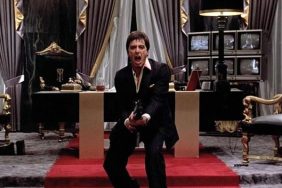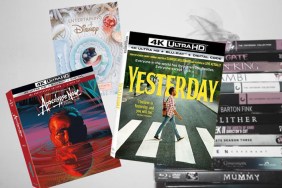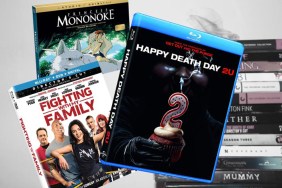Welcome back to CraveOnline‘s Free Film School, the best university that has yet been conceived by humankind. Our motto: Ut non simus quasi adaequate NYU, sed certe potes studere nudus (“We may not be as exhaustive as NYU, but at least you can study naked”). This week, we’ll be talking about something that has fallen out of fashion in contemporary filmmaking: Silence.
And I don’t mean silent movies. I mean scenes in movies that have no sound at all. What was the last totally silent scene from a new film? I’m having trouble thinking of one. Aside from, perhaps, something like Paranormal Activity 4.
Many recent critics and filmgoers have perhaps noticed the tendency of contemporary filmmakers to fill their films with noise, specifically music. Not a second can elapse in any given mainstream feature film without a blast of angry, insistent music from a badly directed composer. Every emotional moment must be carefully manipulated to ensure that the audience knows what they’re supposed to be feeling at that moment. If it’s a moment of betrayal, there are undoubtedly going to be high-pitched string instruments playing underneath. If there is a kiss, there will be a grand swell of gorgeous romantic chords from a complete orchestra. If there is a funny pratfall, there will be a cheerful plinking musical iteration of the pratfall.
And while movie music is a necessary and vital part of the form (it’s hard to imagine a movie without any music at all), the recent trend seems to lean more and more on near-constant music. There may be a few scenes of intimate and incidental dialogue wherein the only background noise is the natural sound from within the scene (i.e. background chatter in a public place, background clinking in a diner, ambient outdoor noises in a park), but any sort of remotely dramatic moment is going to be scored out the nose, pounding us with orchestral bombast. Have you noticed this, or am I going mad?

It’s hard to say when this trend began. I think it’s been more of a very gradual evolution away from quiet movies. If you sit down with any film from the 1970s, you may be struck at how much quiet there is. Let’s take a look at William Friedkin’s excellent horror classic The Exorcist from 1973. This is a horror film about the nature of evil, religious angst, and the role the Devil plays in a modern urban milieu. It is a complex and terrifying film made to appeal to real adult fears rather than mere adolescent bloodthirst. You may notice that the film only has a few bouts of music. The score of The Exorcist is barely present, only occasionally blindsiding the audience with eager and foreign assaults. The times when there is actual music, you tend to remember it. There is a gorgeous and scary plinking theme that plays over the credits. The music was composed by Jack Nitzsche, who wrote the music for such hits as One Flew Over the Cuckoo’s Nest, and who won an Academy Award for the song used in An Officer and a Gentleman.
The Exorcist is a film that conveys mood not through the music alone, but through the way the music is used. Many scary moments are not accompanied by a composer slamming his fists into a piano. There is a scene wherein a priest finds that one of his church’s statues has been hideously vandalized. In a modern film, the cut to the vandalized statue would have been accompanied by a jarring chord. In 1973, that moment was told just using the visuals.
Indeed, when The Exorcist was re-released in 2000 (re-edited as “The Version You’ve Never Seen”) a composer named Steve Boeddeker was hired to compose additional music to round out the silent scenes. The 2000 re-release is not as good as the original, as it seems too eager to adapt to more recent film trends, an adaptation that clashes severely with the original 1970s aesthetic.

There is a time and a place for movie music, and I openly declare that however excellent a score may stand as a stand-alone piece of music, and no matter how carefully a composer has constructed various interlocking themes for each of the characters, after a while it begins to feel like overkill. There are no longer small quiet moments in movies that allow the audience to catch their breath, to recharge, to absorb the simple ambiance of the film.
A lot of this criticism of over-use of music can be traced back to that old film school aphorism “Show, Don’t Tell.” If you recall from that lesson, I explained that, since film is a visual medium, it would behoove a young filmmaker to think of their story more in visual terms rather than as a collection of dialogue. The same rule can be applied to the use of film music. Maybe something like “Imply, Don’t Insist,” would be appropriate. It’s perfectly fine to have a music-filled climax, and to have a few moments of musicianship to guide a scene. The guiding music would be especially important in a fantasy film with weird characters and strange new worlds. But in an average melodrama, perhaps you shouldn’t stuff your film. Because after a while it will start feel a little obvious. As if you’re afraid the audience will not understand what is happening, unless you spell it out for them using the music.
Many filmmakers fear silence. You don’t need to be afraid. At least not if you’re using it right.








